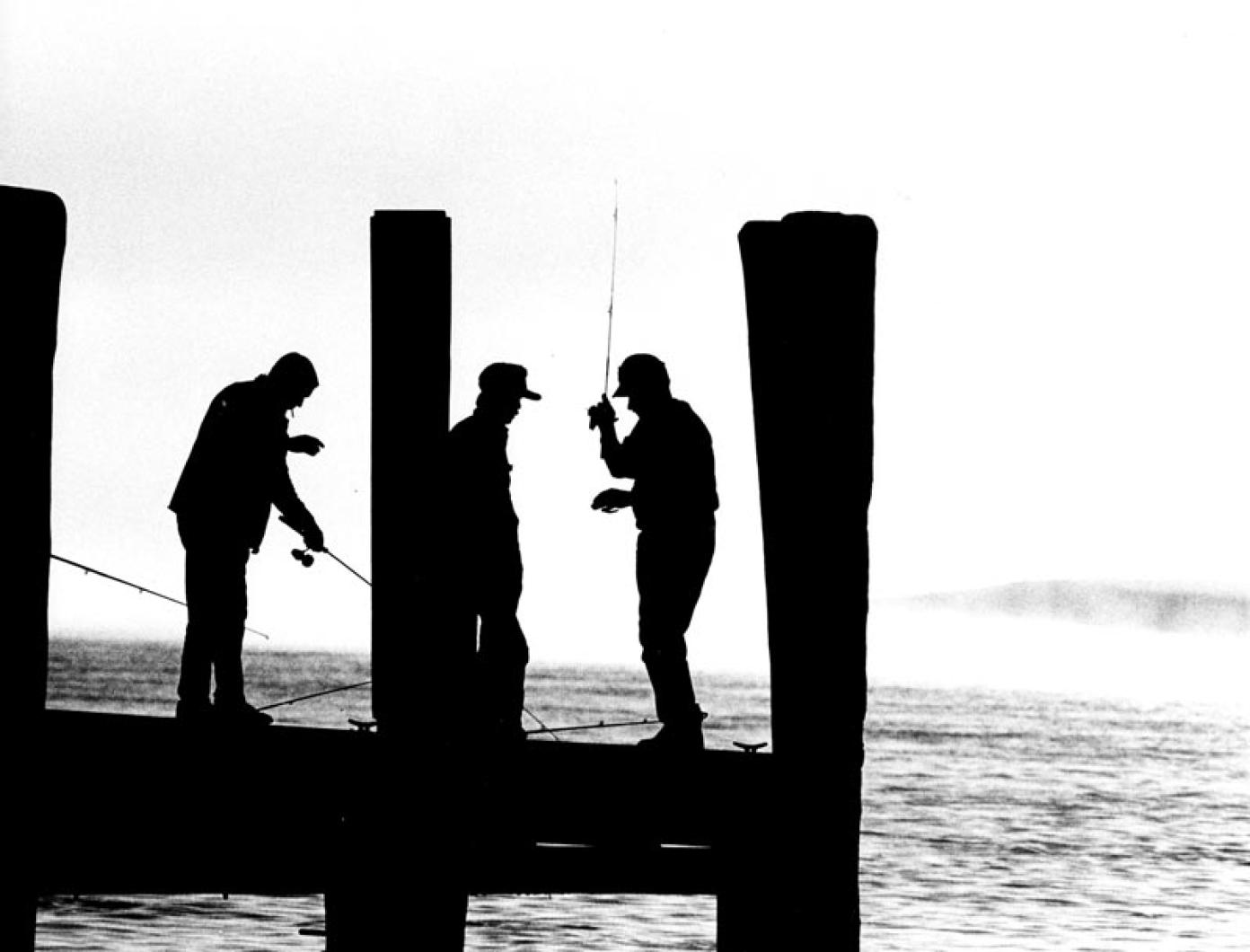From the Sept. 19, 1958 edition of the Vineyard Gazette:
The Vineyard’s annual fishing derby is on, with its traditional excitement, as contestants from far and wide strive to land prize-winning fish. In this attempt they virtually live on the beaches and in the boats, fishing by the light of the moon or in the darkness, fishing with a persistence that no one save a fishing fanatic could understand and appreciate.
Everyone knows that the bluefish have been given a place in this derby, but it is also generally known that it started out to be strictly a striped bass fishing contest, and thus it has come about that one of the least popular of all fish found in this area in colonial times, has become one of the most sought after. Anyone having any doubts about this statement has only to check on the caplog prices paid for striped bass at Fulton Market, where the smaller the fish the higher the price paid per pound, until even the smallest fish allowed by law to be taken will probably bring a dollar or more when landed.
Just why the striper is so popular either for catching or eating, is one of those things that are difficult to explain. The striped bass is not an especially tasty fish to the writer’s taste, regardless of how it may be prepared, and as for its game qualities, Roger Williams, governor of the Rhode Island colony said something like this in a journal which he wrote and which may be occasionally found today: The striped bass, being a slow and generally logy fish, it requires little skill to take them on a hook – should one seek excitement in fishing, the tautog is recommended as a fighter, both wily and powerful.
It was this same governor, in the same book, who also described the commercial taking of the striped bass in his day. He wrote that in spring and fall, the people seine the striped bass in great quantities for salting and curing. “These fish are seldom eaten fresh, except that at times a very savory dish is made from the brains.”
These statements, written no more than three hundred years ago, make one wonder because it is known that commercial fishing for striped bass was carried on quite intensively around the Vineyard a century ago, but somehow no one has ever made any mention of what was done with the fish. That sport-fishing for the bass was also carried on then and before, is also known, and from what is known of the Potomac and Rappahannock Rivers, it may be concluded that George Washington and his associates fished those streams with rod and reel for the same striped bass, or rockfish as they are sometimes called.
Here and hereabouts, long years ago, the history of sport fishing has left the Island with some grand tradition but no records whatever. At Squibnocket, the Striped Bass Club carried on for years, bringing many famous men to the Island to fish for them. At Noman’s Land, another bass club was conducted for a lengthy period and so too on Cuttyhunk, Nashawena and Pasque.
While this sport-fishing was going on, the smack-fishermen, chiefly from Rhode Island and Connecticut shores, and certain Island groups, were seining striped bass around the shores and in the salt ponds. The striped bass seine was a peculiar piece of gear, and very long. One seine has been mentioned in Island tradition, which must have been quite half a mile in length. It was hauled by oxen, according to the tales.
In search of the striped bass the seiners came to Squibnocket Bight and other points along the south side of the Vineyard as recently as between fifty and sixty years ago, and Island seining companies seined these fish in the salt ponds much more recently than that, but the marketing of these fish fresh had begun before this time.
The history of trap-fishing in Vineyard Sound, which goes back at least a century and probably much further, includes frequent mention of striped bass and of bass-traps and other references to these fish. As a matter of fact it seems probable that the bass-traps, so-called, were the first fish-traps, pounds, or weirs to be set in Vineyard Sound waters.
There has been no shore seining of striped bass for years, and but sporadic attempts to take them in the salt ponds, these occasions have been when a school was located in a pond and the fish known to be at hand. As for the bass-traps in Vineyard Sound, the practice of setting them went out even before that, but it was not because of conservation laws or sentiment, nor even the increasing scarcity of fish, which brought about the abandonment of such business. Rather it was because of a certain Blue Law, still on the statute books, which forbids the fishing of gear on Sunday.
The law prescribed, that the door of such fish-traps must be raised on Saturday night and kept in that position until Sunday night, in order to prevent fish from entering. The older fishermen would hang a piece of net between the door-stakes of a trap, which form a short distance would appear to be the door itself, which was not the case at all.
Compiled by Hilary Wall
library@mvgazette.com




Comments
Comment policy »